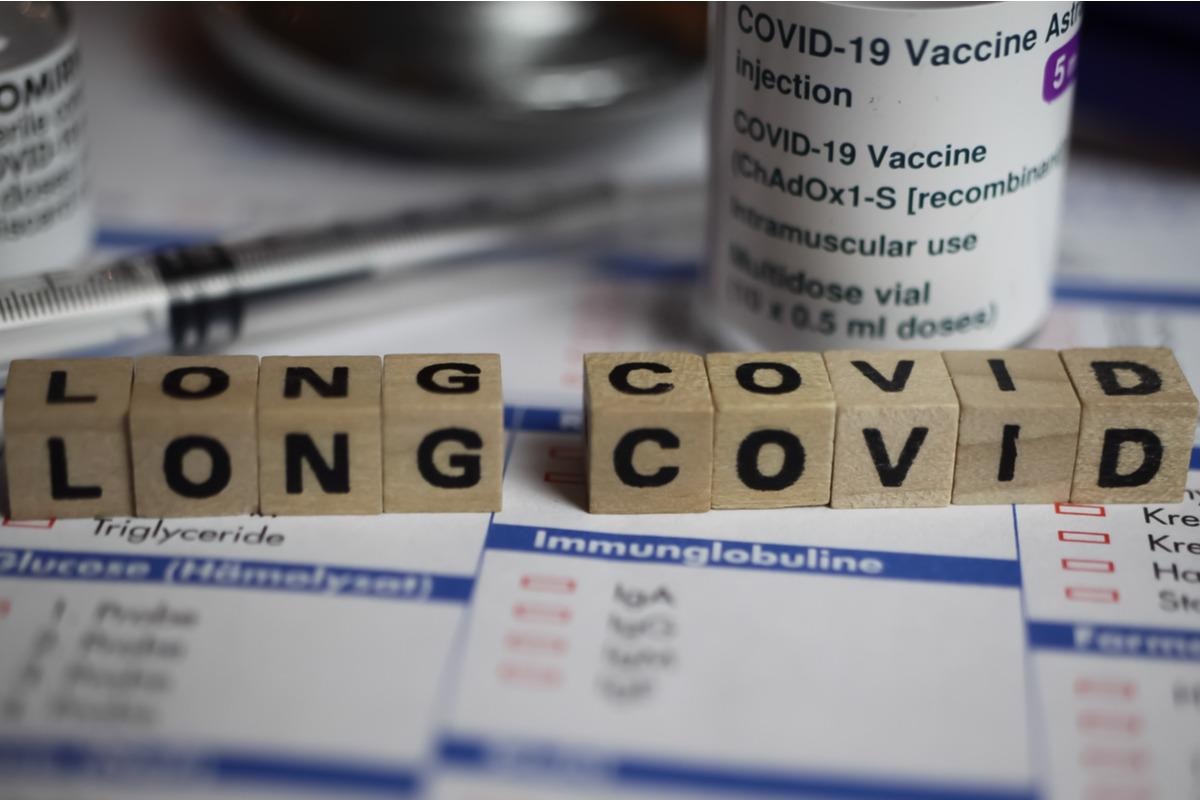Scientists have reported multisystem ailments associated with severe acute respiratory syndrome coronavirus-2 (SARS-CoV-2) infection, which is also the causal agent of the ongoing coronavirus disease 2019 (COVID-19) pandemic.
 Study: Assessment of 115 symptoms for Long COVID (post-COVID-19 condition) and their risk factors in non-hospitalised individuals: a retrospective matched cohort study in UK primary care. Image Credit: Ralf Liebhold/Shutterstock
Study: Assessment of 115 symptoms for Long COVID (post-COVID-19 condition) and their risk factors in non-hospitalised individuals: a retrospective matched cohort study in UK primary care. Image Credit: Ralf Liebhold/Shutterstock
Studies have reported that around 10% of individuals with COVID-19 experience persistent symptoms or relapse of symptoms beyond four to twelve weeks post-infection. The persistence of COVID-19 symptoms, in recovered patients, is referred to as post-acute COVID-19 syndrome, post-acute sequelae of COVID-19 (PASC), and Long COVID.
Background
Some of the characteristic symptoms of Long COVID, described by the World Health Organisation (WHO), are fatigue, shortness of breath, and cognitive dysfunction. These symptoms persist three months from the onset of acute COVID-19 symptoms and last for at least two months.
The difference between ongoing symptomatic COVID-19 and Long COVID has been differentiated by the UK National Institute for Health and Care Excellence (NICE). It stated that symptoms persisting between four and twelve weeks can be considered as ongoing COVID-19 symptoms. However, if the symptoms persist beyond twelve weeks, the individuals should be considered to be suffering from Long COVID.
A meta-analysis and systematic review of Long COVID has shown ten common symptoms, i.e., fatigue, headache, muscle pain, shortness of breath, joint pain, cough, altered smell and taste chest pain, and diarrhea. Many of the studies associated with the evaluation of Long COVID lack a control group, which inhibits researchers to determine if these symptoms are strongly related to SARS-CoV-2 infection, pre-existing comorbidities, or societal effects related to the pandemic.
Researchers emphasized that more large-scale studies are required, based on routinely obtained healthcare data. These data would help understand which symptoms are independently associated with the long-term effects of COVID-19. There is a gap in research related to the determination of the risk factors that contribute towards the development of Long COVID. Assessment of these factors would help manage Long COVID better.
A new study
A new study currently posted to the Research Square* preprint server while under consideration for publication at the BMC One Health Outlook journal, has focused on determining which symptoms are linked with confirmed SARS-CoV-2 infection beyond 12 weeks post-infection, in non-hospitalized individuals. They further investigated the risk factors related to the development of persistent symptoms.
Scientists conducted a retrospective matched cohort study between 31st January 2020 and 15th April 2021, using data from a large database of UK-based primary care electronic health records, Clinical Practice Research Datalink (CPRD) Aurum. In this study, around 486,149 adult patients were selected, who had SARS-CoV-2 infection but had not required hospitalization, within 28 days of the diagnosis. This group was named the infected group. Researchers matched this group, by its propensity score, with 1,944,580 patients who were without a coded record of either confirmed or suspected COVID-19 (uninfected cohort).
Findings
Scientists observed that individuals with confirmed COVID-19 infection were at a higher risk of experiencing a wide range of symptoms beyond twelve weeks, post-infection. This was not the case with the uninfected cohort. Following the analysis of the large-scale data, 115 separate symptoms were identified, which persisted beyond twelve weeks post-infection. Therefore, these symptoms were linked with Long COVID.
Researchers used Separate Cox proportional hazards models to estimate adjusted hazard ratios (aHR) for individual symptoms and Long COVID symptoms. The largest aHR was observed for anosmia. Other identified symptoms of Long COVID were sneezing, difficulties with ejaculation, reduced libido, shortness of breath at rest, fatigue, pleuritic chest pain, hoarse voice, and fever.
The authors informed that Long COVID was also found in younger adults. Additionally, female sex, individuals belonging to black ethnic groups, mixed-race or other ethnic minority groups, and those associated with socioeconomic deprivation were at a higher risk of Long COVID infection. Also, individuals with smoking habits, high BMI, and the presence of several comorbidities (e.g. diabetes and chronic obstructive pulmonary diseases), were determined to be strongly likely to develop Long COVID.
Strengths and limitations
One of the main strengths of this study is the large sample size of the study cohort containing 486,149 individuals with confirmed SARS-CoV-2 infection and 1.9 million propensity score-matched patients with no prior record of infection. Due to the large sample size, scientists could statistically determine differences in the reporting of a wide range of symptoms between the infected and uninfected cohorts. Another strength is associated with the inclusion of a large number of previously reported COVID-19 symptoms.
One of the major limitations of this study is the inclusion of routinely coded healthcare data. Coded data in primary care records are inclined to be under representative of the true symptom burden suffered by individuals with Long COVID. This is because, in many patients’ clinical histories, the symptoms are reported as free text and not as SNOMED-CT codes (analyzed in this study).